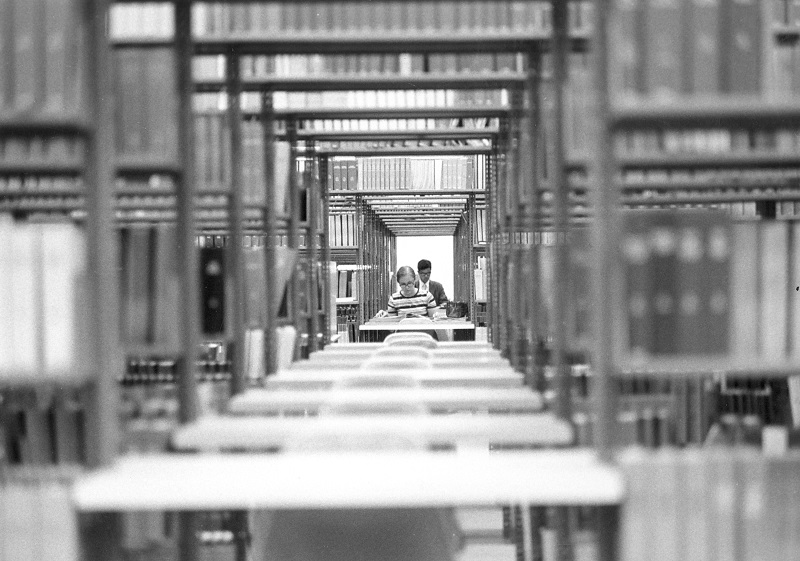University Libraries

Happy Records and Information Management Month!
By Amy Rohmiller
April is Records and Information Management Month.
Never heard of records and information management? Neither had I until I took my first archives class, but it’s a crucial part of what archivists do. As part of its day-to-day operations, the University generates a lot of records — or documentation of the business of the University. In University archives, it’s our job to manage those records that have historical value and can tell people in the future about what UD was like in the past.
We have a lot of different types of records in the University archives, dating back to when the University was founded in 1850. We collect everything from documents generated by the president’s office to photographs of campus to material from student organizations to faculty papers to old versions of UD websites.
We manage these records and the information they contain by not only collecting them, but also arranging them and describing them so that they can be found and used. Our records in University archives are generally arranged by keeping everything created by a single department, office, organization, or person together in one collection. We describe collections in documents called “finding aids” so that researchers and users can know what is in each collection and how they can find the material they are interested in. The finding aids for University archives’ collections are available in ArchivesSpace.
We also take steps to preserve records we collect so that they will last long into the future. For paper records, we remove any staples or paperclips that might rust; unfold and flatten documents that are folded; and store them in acid-free boxes and folders. We store all our collections in rooms that are tightly controlled for temperature and humidity. If our materials get too hot, too cold, too dry or too wet, they start to deteriorate faster.
By preserving, arranging and describing university records, we act as the “memory keepers” of the University and help students, faculty, the Dayton community and researchers anywhere know what was happening at UD in years gone by. If you or your organization have records that you think have value and can keep memories of your time here alive, please consider donating them to the University archives.
— Amy Rohmiller is an associate University archivist in the University Archives and Special Collections.
